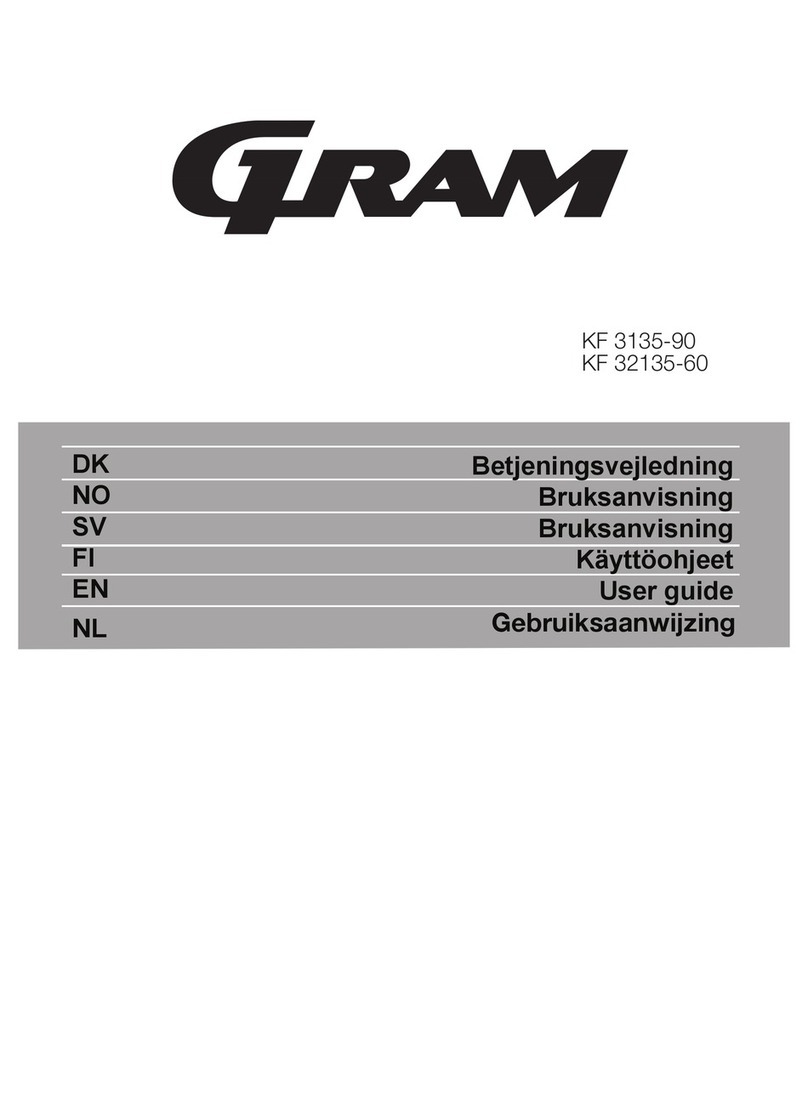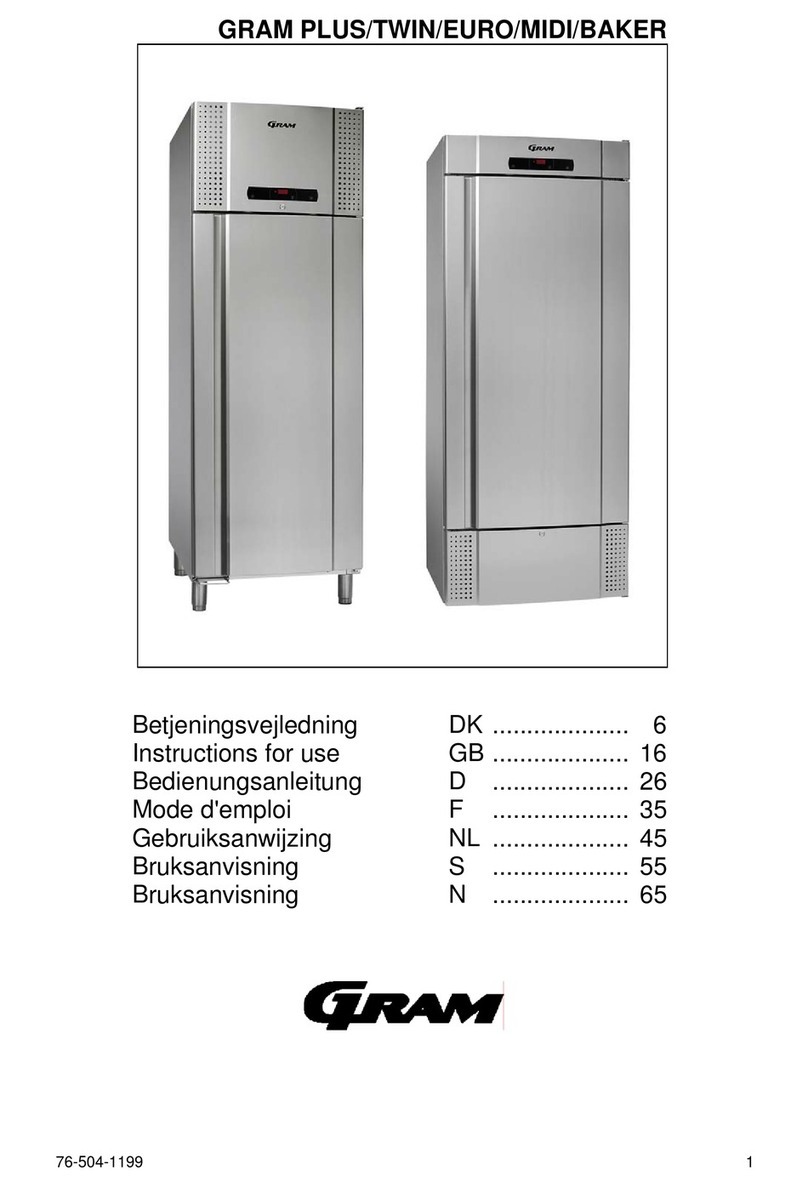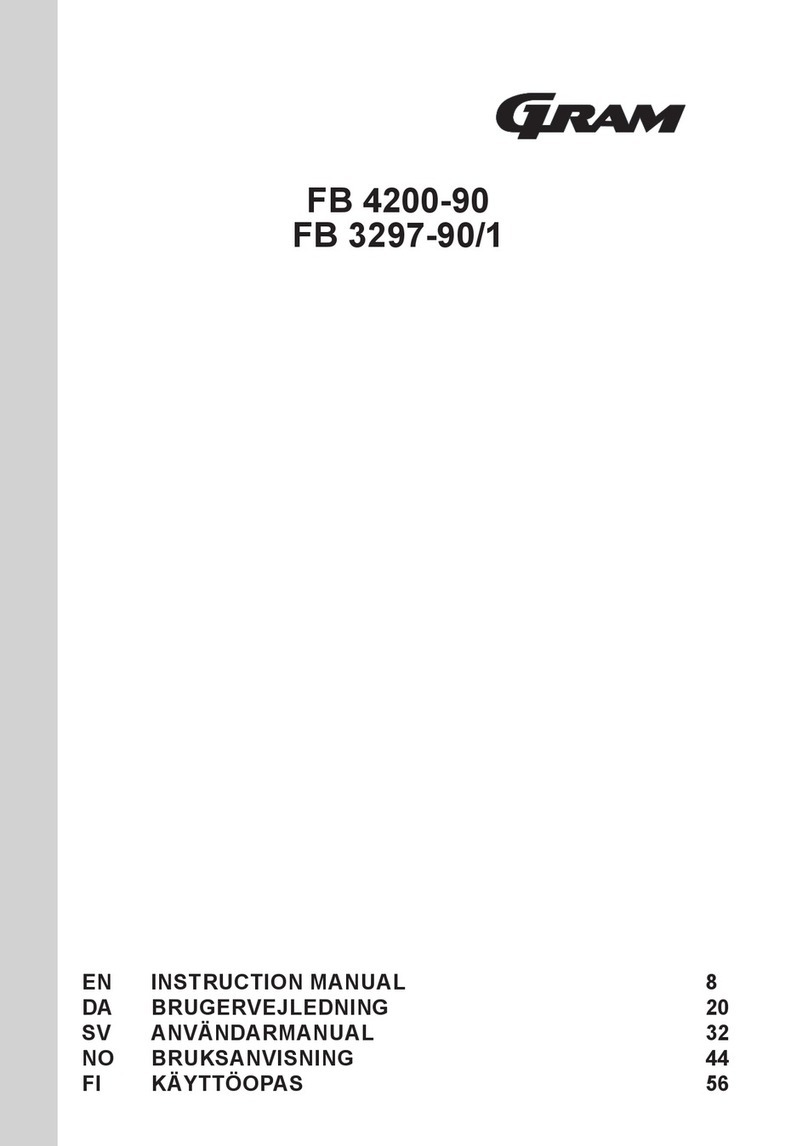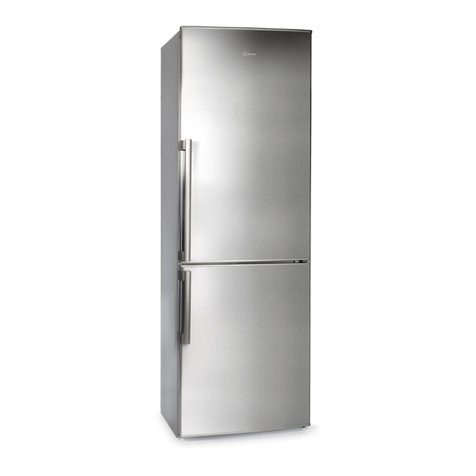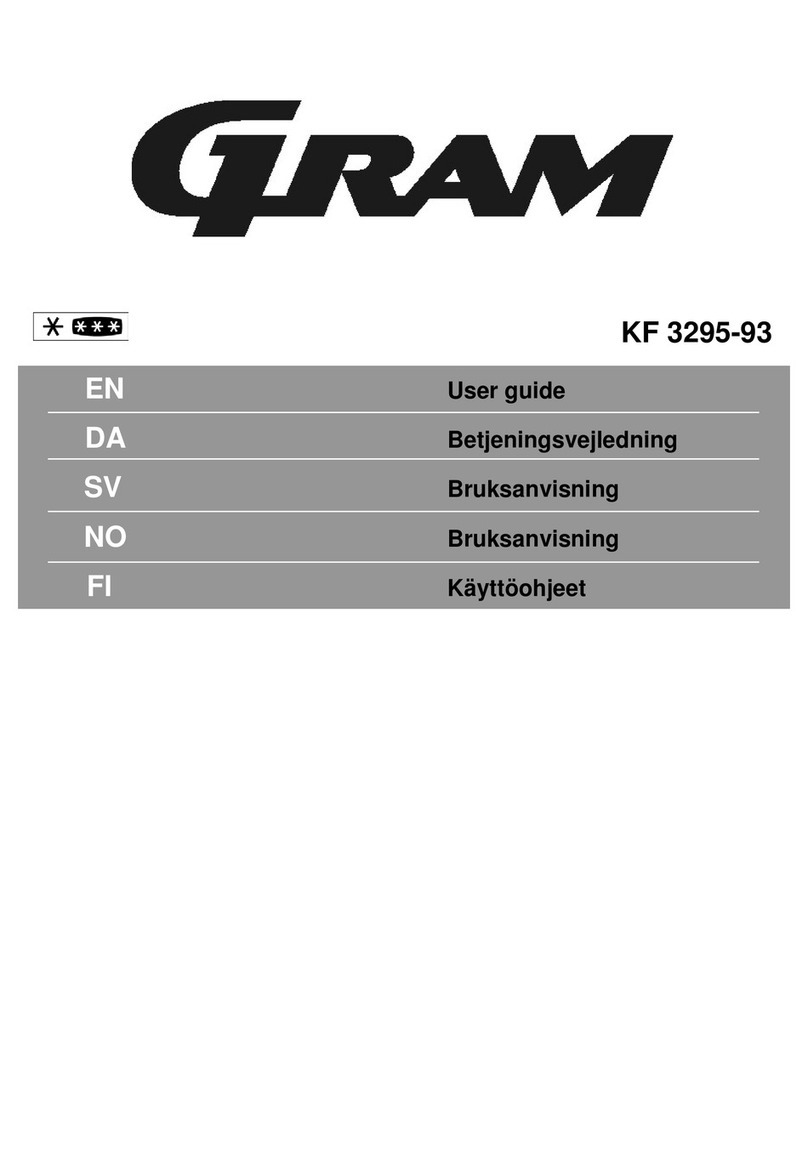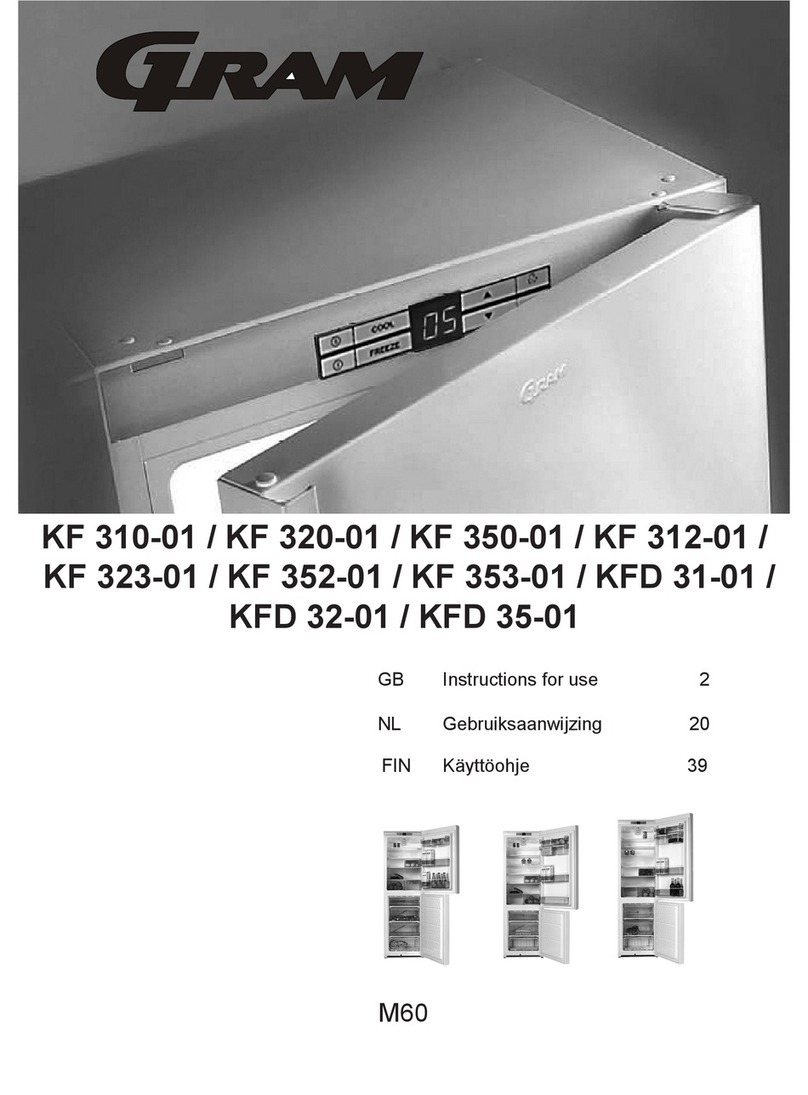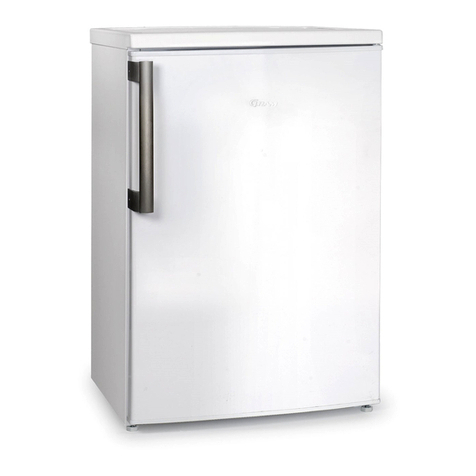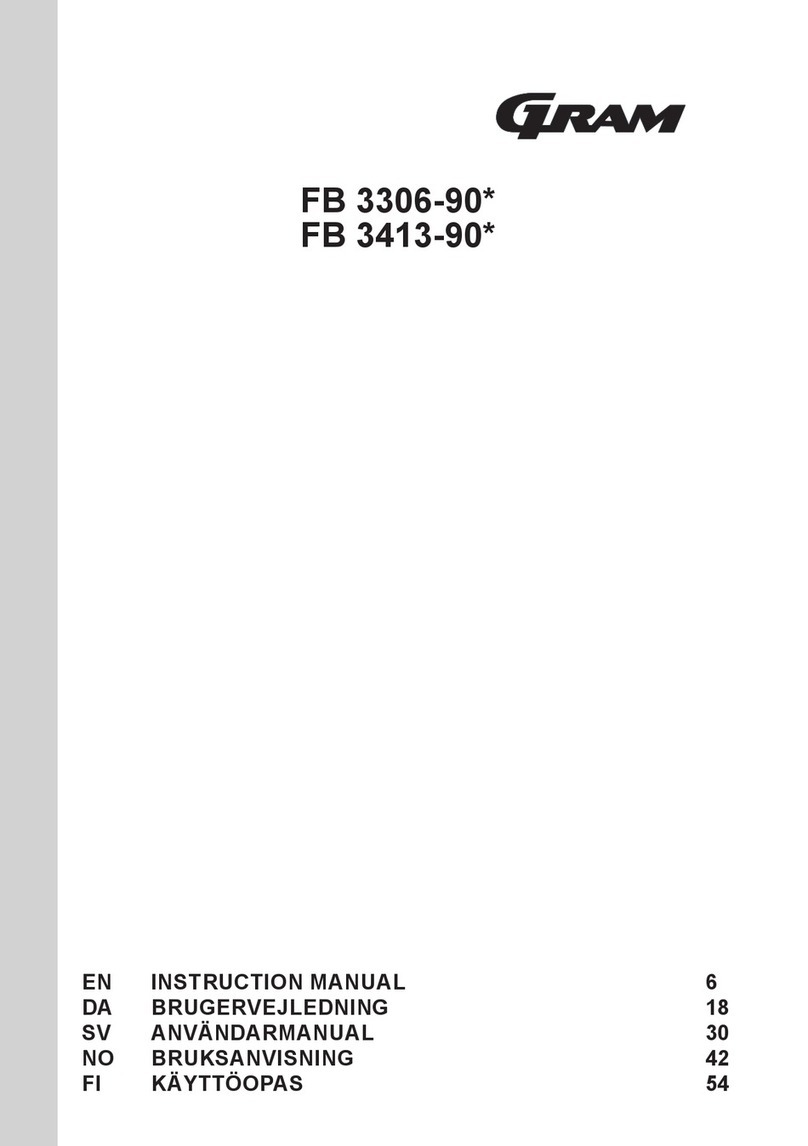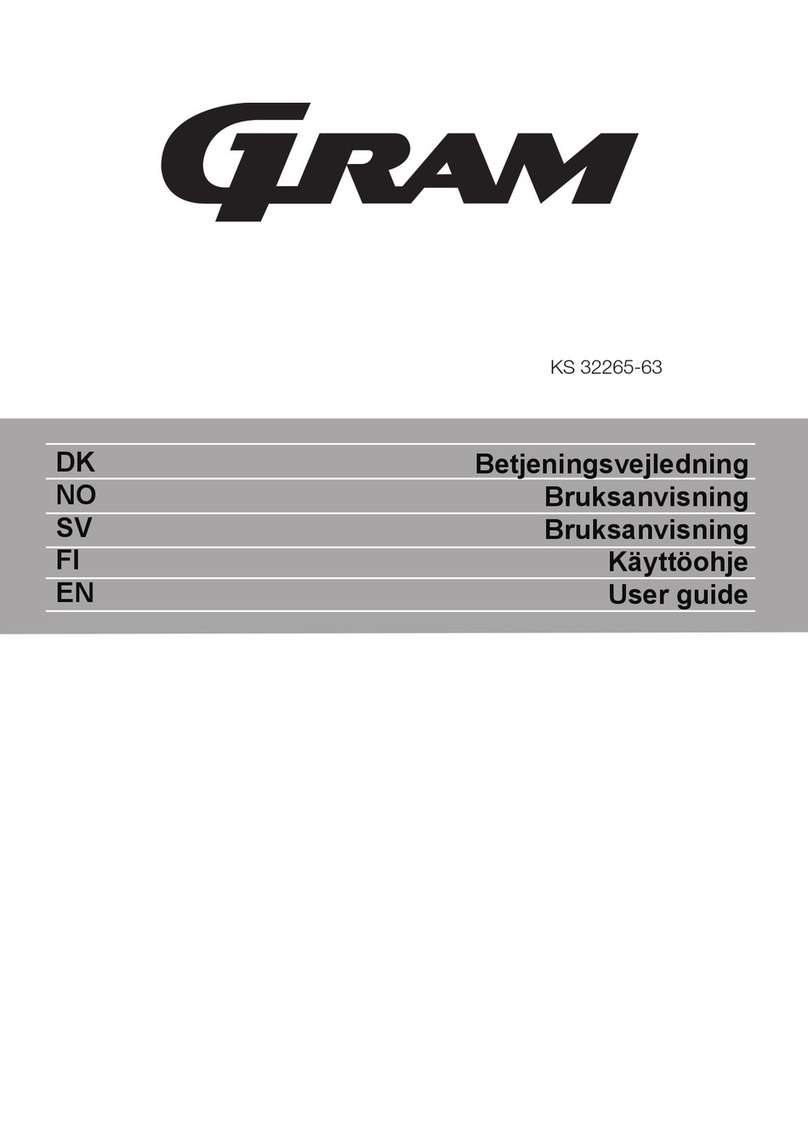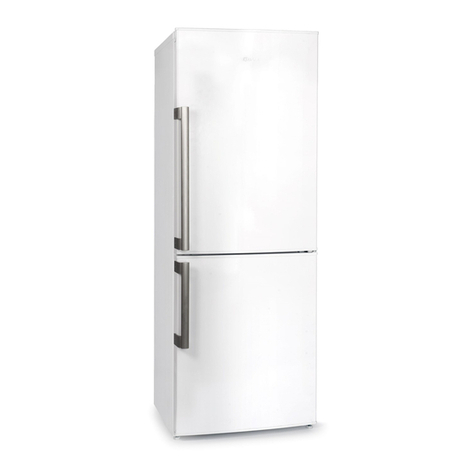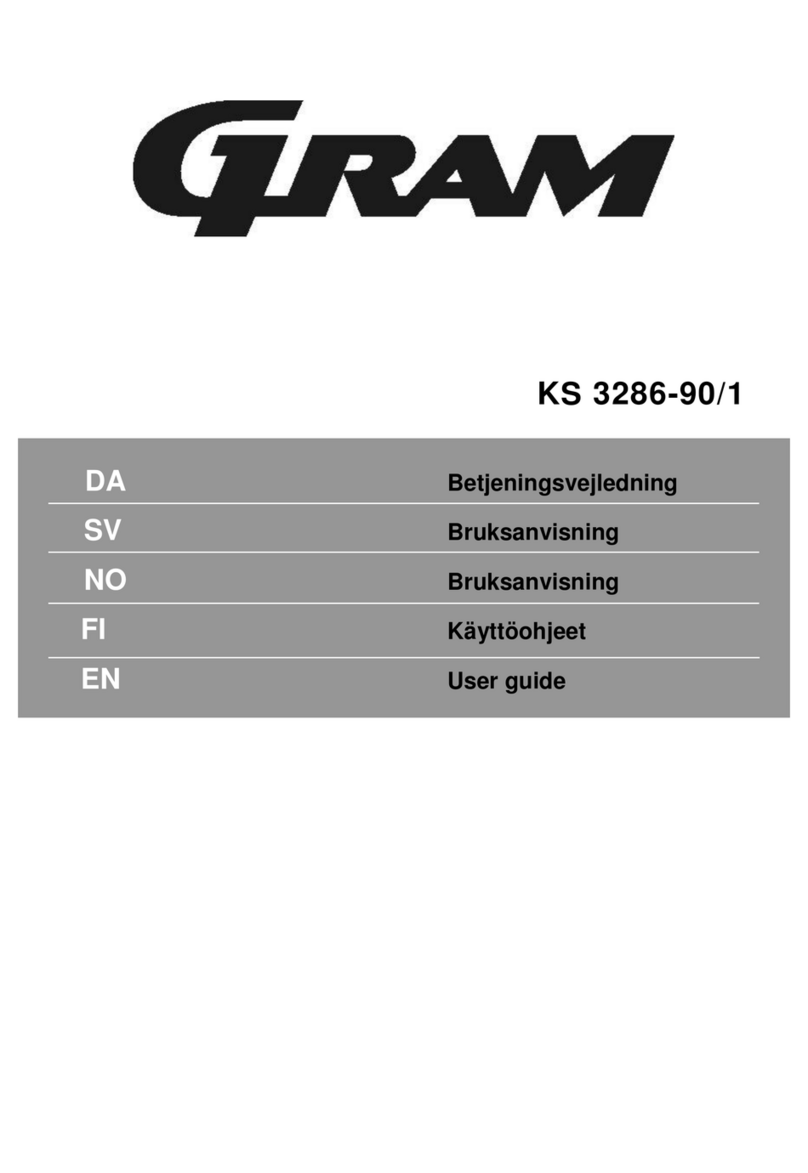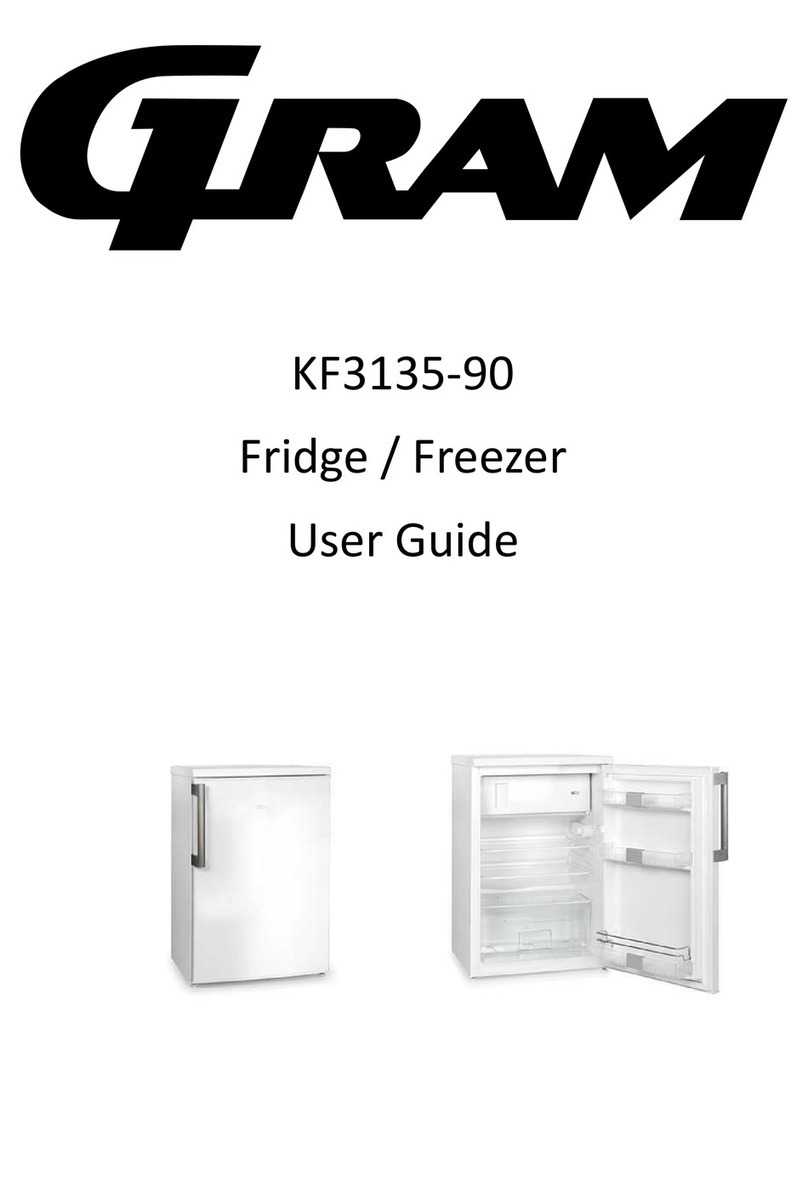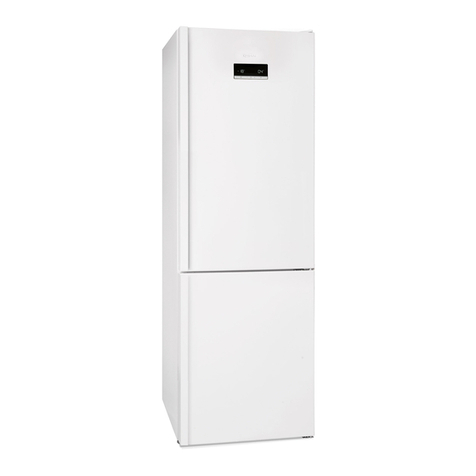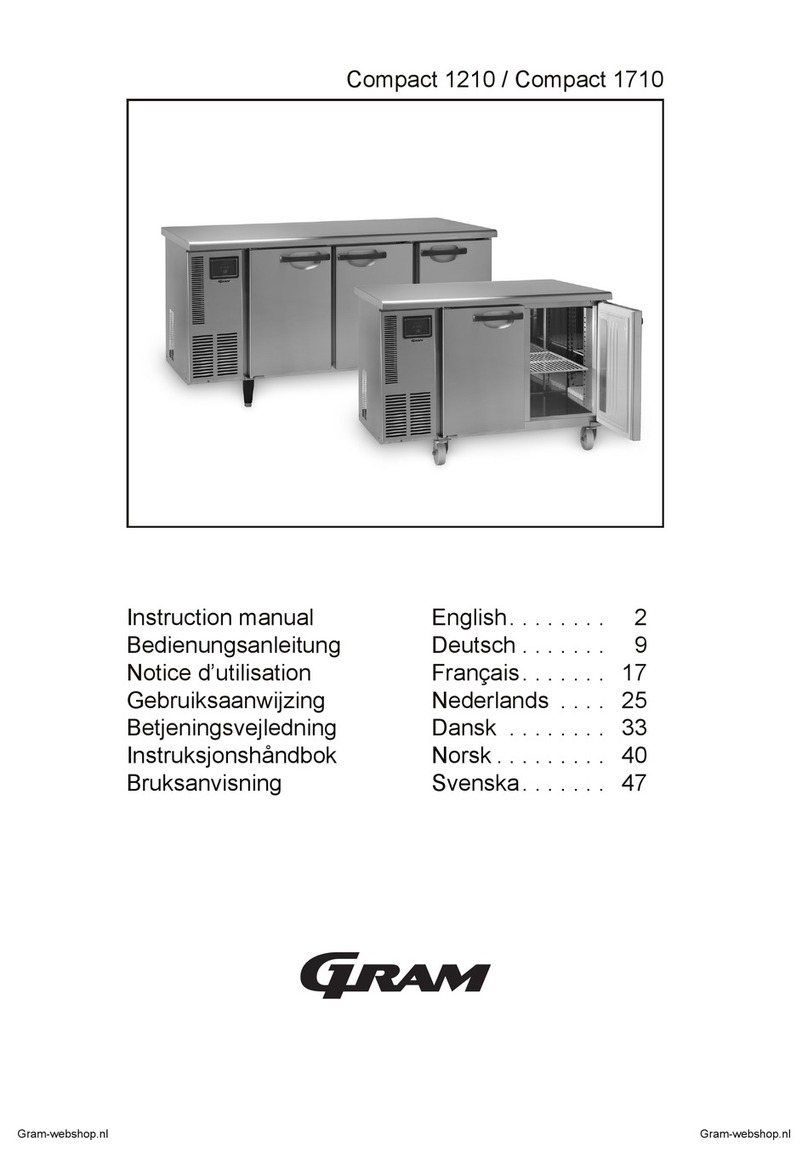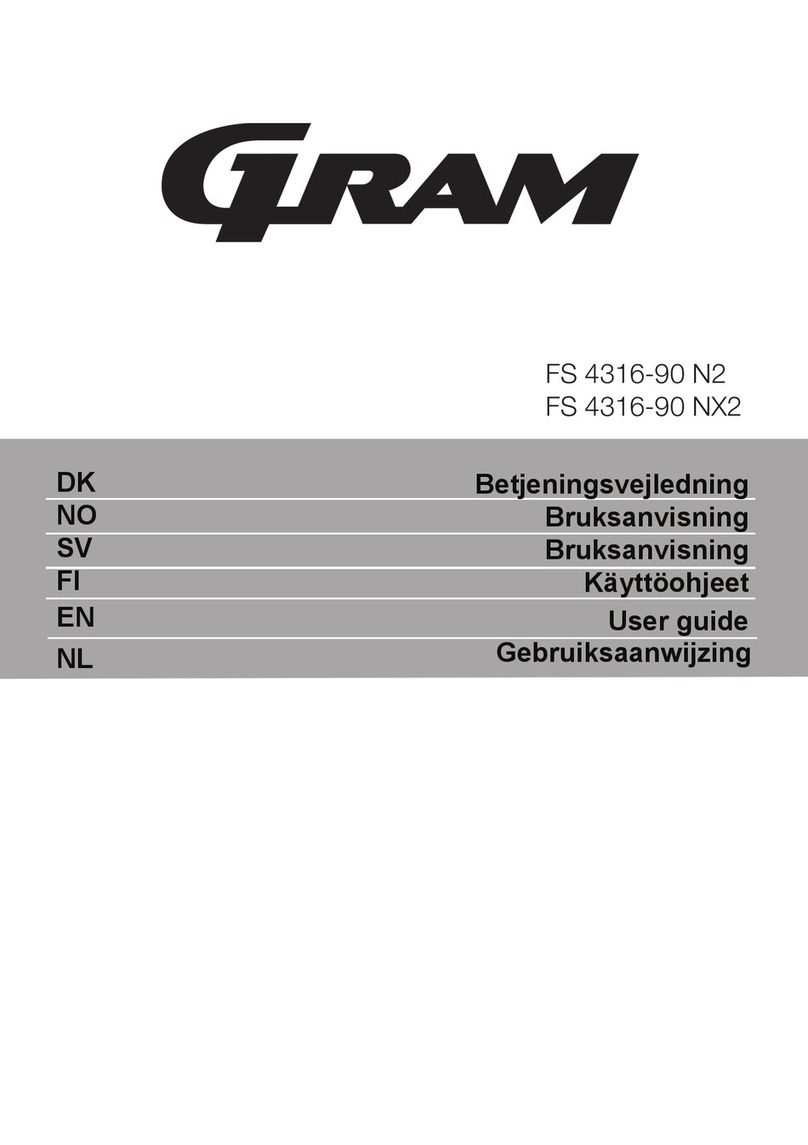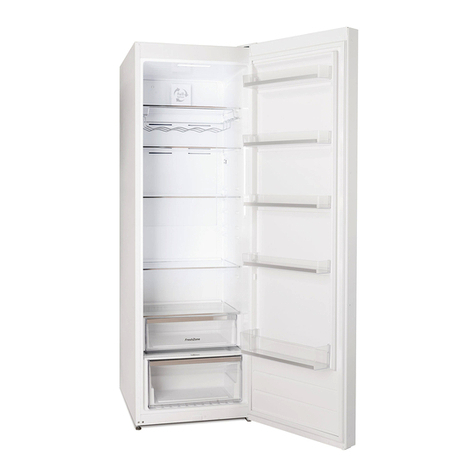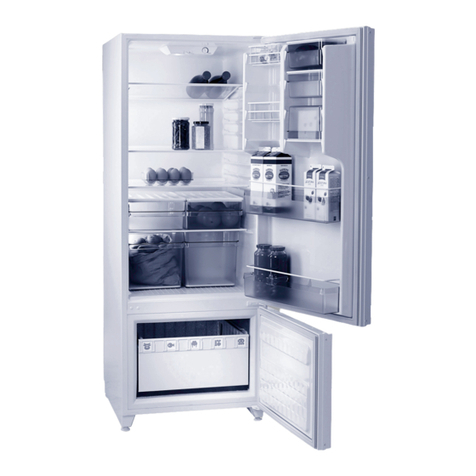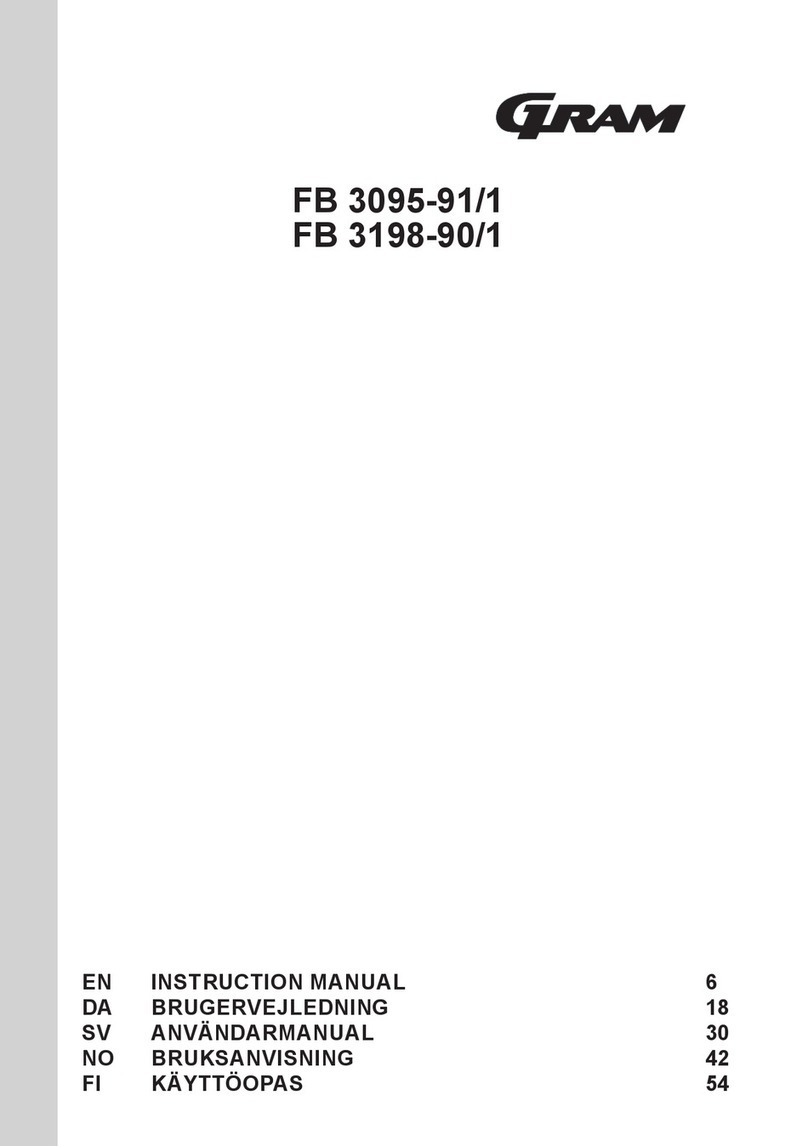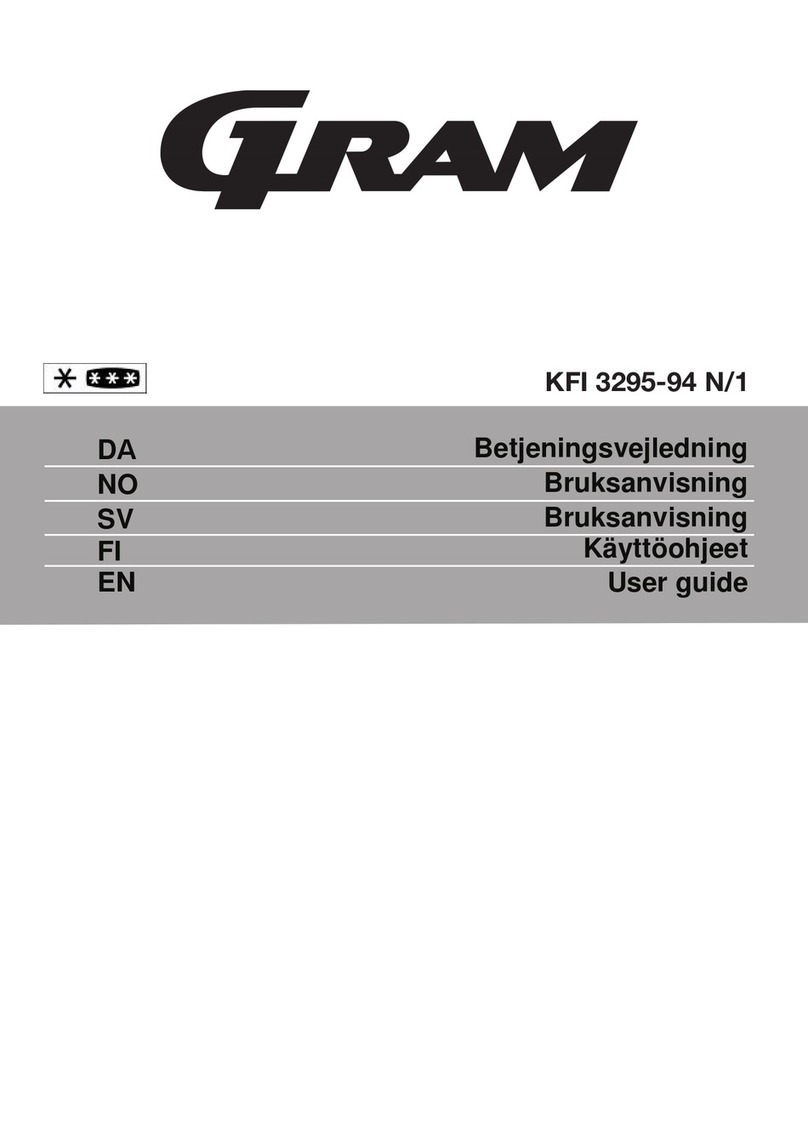EN
4
2Important Safety Warnings
Please review the following
information. If these are not followed,
personal injury or material damage
may occur. Otherwise, all warranty and
reliability commitments will become
invalid.
Intended use
t5IJTQSPEVDUJTEFTJHOFEGPSEPNFTUJDuse.
t*UTIPVMEOPUCFVTFEPVUEPPST*UJTnot appropriate to use it outdoor even
if the place is covered with a roof.
General safety
t8IFOZPVXBOUUPEJTQPTFTDSBQthe product, we recommend you to
consult the authorized service in order
to learn the required information and
authorized bodies.
t$POTVMU(3".TFSWJDFGPSBMMZPVSquestions and problems related to
the refrigerator. Do not intervene or let
someone intervene to the refrigerator
without notifying the authorized
services.
t%POPUFBUDPOFJDFDSFBNBOEJDFcubes immediately after you take
them out of the freezer compartment!
(This may cause frostbite in your
mouth.)
t%POPUQVUCPUUMFEBOEDBOOFEliquid beverages in the freezer
compartment. Otherwise, these may
burst.
t%POPUUPVDIGSP[FOGPPECZIBOEthey may stick to your hand. t7BQPSBOEWBQPSJ[FEDMFBOJOHmaterials should never be used in
cleaning and defrosting processes of
your refrigerator. In such cases, the
vapor might get in contact with the
electrical parts and cause short circuit
or electric shock.
t/FWFSVTFUIFQBSUTPOZPVSrefrigerator such as the door as a
means of support or step.
t%POPUVTFFMFDUSJDBMEFWJDFTJOTJEFthe refrigerator.
t%POPUEBNBHFUIFDPPMJOHDJSDVJUwhere the refrigerant is circulating,
with drilling or cutting tools. The
refrigerant that might blow out when
the gas channels of the evaporator,
pipe extensions or surface coatings
are punctured may cause skin
irritations and eye injuries.
t%POPUDPWFSPSCMPDLUIFWFOUJMBUJPOholes on your refrigerator with any
material.
t3FQBJSTPGUIFFMFDUSJDBMBQQMJBODFTmust only be made by qualified
QFSTPOT3FQBJSTQFSGPSNFECZincompetent persons may create a
risk for the user.
t*ODBTFPGBOZGBJMVSFPSEVSJOHa maintenance or repair work,
disconnect your refrigerator’s mains
supply by either turning off the
relevant fuse or unplugging your
appliance.
t%POPUQVMMCZUIFDBCMFXIFOQVMMJOHoff the plug.
t1MBDFUIFCFWFSBHFXJUIIJHIFSQSPPGTtightly closed and vertically.
